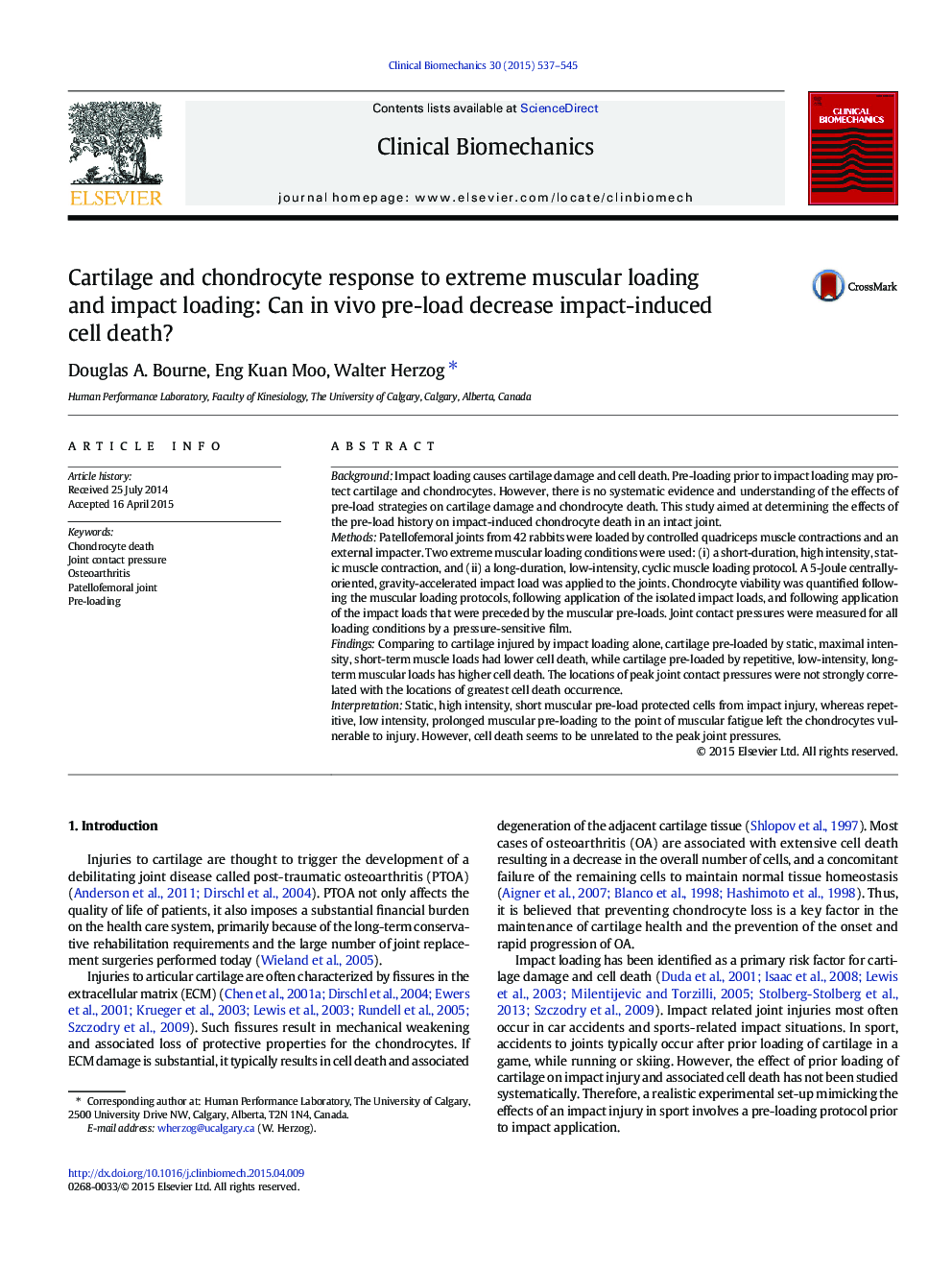| Article ID | Journal | Published Year | Pages | File Type |
|---|---|---|---|---|
| 4050235 | Clinical Biomechanics | 2015 | 9 Pages |
•Lapine patellofemoral joints were loaded using muscle contraction and impact loads.•Impact loads were applied with and without muscular pre-loading.•Chondrocytes viability and joint contact pressures were measured.•Static, high intensity, but short muscle pre-loads protect chondrocytes.•Repetitive, low intensity, but prolonged muscle pre-loads imperil chondrocytes.
BackgroundImpact loading causes cartilage damage and cell death. Pre-loading prior to impact loading may protect cartilage and chondrocytes. However, there is no systematic evidence and understanding of the effects of pre-load strategies on cartilage damage and chondrocyte death. This study aimed at determining the effects of the pre-load history on impact-induced chondrocyte death in an intact joint.MethodsPatellofemoral joints from 42 rabbits were loaded by controlled quadriceps muscle contractions and an external impacter. Two extreme muscular loading conditions were used: (i) a short-duration, high intensity, static muscle contraction, and (ii) a long-duration, low-intensity, cyclic muscle loading protocol. A 5-Joule centrally-oriented, gravity-accelerated impact load was applied to the joints. Chondrocyte viability was quantified following the muscular loading protocols, following application of the isolated impact loads, and following application of the impact loads that were preceded by the muscular pre-loads. Joint contact pressures were measured for all loading conditions by a pressure-sensitive film.FindingsComparing to cartilage injured by impact loading alone, cartilage pre-loaded by static, maximal intensity, short-term muscle loads had lower cell death, while cartilage pre-loaded by repetitive, low-intensity, long-term muscular loads has higher cell death. The locations of peak joint contact pressures were not strongly correlated with the locations of greatest cell death occurrence.InterpretationStatic, high intensity, short muscular pre-load protected cells from impact injury, whereas repetitive, low intensity, prolonged muscular pre-loading to the point of muscular fatigue left the chondrocytes vulnerable to injury. However, cell death seems to be unrelated to the peak joint pressures.
